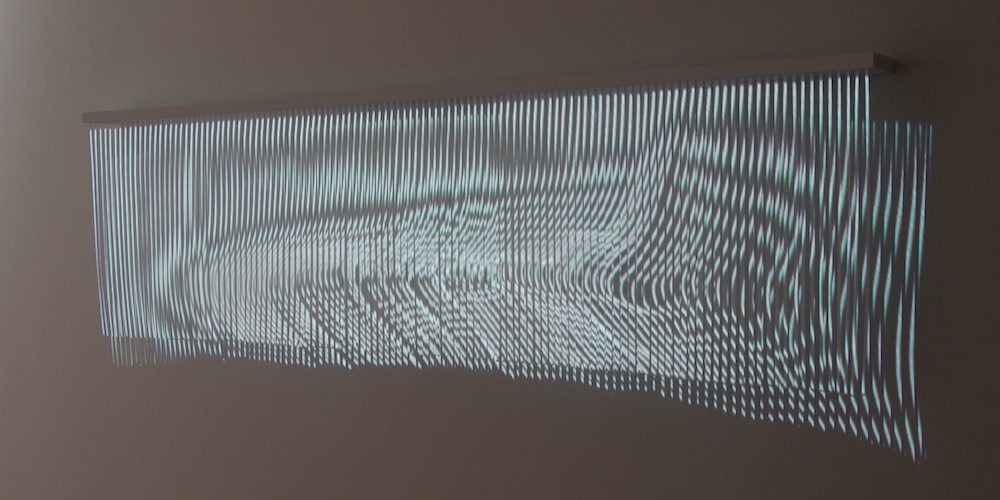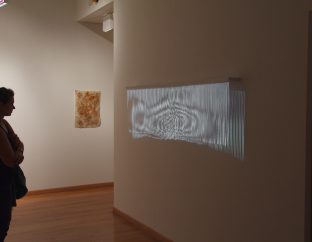Interactive installation. 80" x 25" x 5". Handmade paper, MDF, elastic cord, video projector, video camera, computer, custom software.
Double Interference is an interactive installation based on the same principles of our Notional Field series. It was created for Material Assumptions: Paper as Dialog, a group show curated by Jessica Cochran (and others) for the Center for Book and Paper Arts at Columbia College in Chicago, IL. The premise of the exhibition was to provide the invited artists with handmade paper that the Center created, which was used as a key material for each of the pieces made by the artists for the exhibition. Our statement read as follows:
Our work normally sits in the space between the virtual and the real, but the invitation to participate in Material Assumptions gave us an opportunity to explore the relationship between real and virtual, physical and digital, even further. Our piece relies on a technique that we have been developing for almost two years: an interactive projection of lines is cast on a structure or physical object that acts to create an interference (moiré) pattern, which itself is a manifestation of a different kind of “in-between.” Given that we would be provided with handmade paper as a material for the piece, we thought that it would be interesting to involve it in our “traditional” process, as well as to extend this process by applying an additional layer of mechanization and digitization to both the design and the fabrication of the work. On the design side, the pattern that was cut into the paper was created using a simple program that generated rectangles whose widths were altered using a sinusoidal function. Thus, the design is not the outcome of drafting (or even mousing); rather, it is the result of a numerical expression. The fabrication was done by using a laser cutter, itself a machine controlled by numerical expressions. We thought it interesting then to have this beautifully imperfect handmade paper be altered via processes that begin in the purely abstract and perfect world of numbers, but have a manifestation in the physical world via digital technologies. Again, given that our work tends to live in the “in-between” of the virtual and the real, transforming the handmade via digital/automated processes felt like yet another “in-between” that our work is now able to occupy.
Mentions and Reviews
- Review: Material Assumptions: Paper as Dialogue. Art in Print, September – October 2012.


